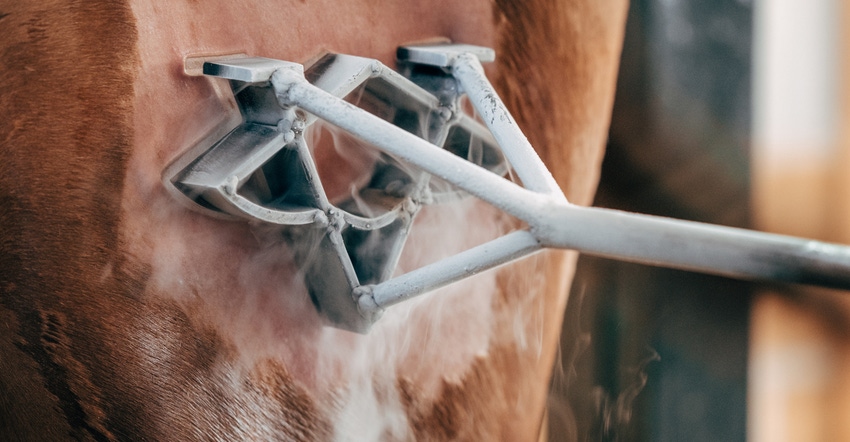May 12, 2020

Branding is the social event of the spring, signaling the end of winter and the long hours of calving — and the beginning of greener pastures ahead. Friends and neighbors come from far and wide to help out and relive the cherished tradition.
As the U.S. continues to limit the spread of COVID-19 by closing offices, promoting social distancing and working from home, agriculture does not stop. The work must go on. Although calves must be branded, not taking precautions can mean the difference between life and death for some loved ones.
Although similar in nature to the common flu, COVID-19 is more contagious and lethal. A cough or sneeze from an infected person aerosolizes the virus, which can remain airborne for several hours, affecting individuals as they unknowingly pass through the cloud of droplets. The virus can be transmitted by touching infected surfaces and then touching your face, particularly your eyes, mouth and nose.
Related: Complete coronavirus coverage
COVID-19 also is more virulent than the common flu, meaning the slightest exposure to the virus could be enough to infect you. Infected individuals may unknowingly spread the virus once infected, even before symptoms appear or with mild symptoms.
The Panhandle Public Health District enlisted local ranchers to develop suggestions for brandings to limit the spread of this disease, which is especially threatening to the elderly, people with a compromised immune system, and people with heart and lung issues.
These suggestions are intended to give ideas of how to limit the spread of COVID-19 while still getting the work done:
Consider staying home if, in the past 14 days, you have been sick, have been around someone who was sick, have been to an area with a confirmed COVID-19 case, or have traveled outside of the area.
Consider staying home if you are elderly or have health issues. Also consider leaving children at home.
Make sure those preparing food wear gloves, are not sick and have not potentially been exposed. Have servers make plates up to limit how much each person touches them and to help limit the amount of time in line. Eat outdoors while practicing social distancing.
Consider ways to limit the size of the branding crew to decrease each person’s exposure (Nordfork, calf table, etc.).
Limit who you invite from affected areas or anyone living out of the area, including family members. This is not the year to have your daughter’s friend from the city out to experience a branding.
Consider not inviting someone who is not taking COVID-19 precautions seriously because they have a greater likelihood of contracting and spreading the disease.
Practice social distancing by avoiding close contact. Maintain a 6-foot distance and avoid handshakes, high-fives, hugging, etc.
These suggestions are meant to help producers think about the risks and consider alternative practices in this unprecedented time. Some may be unrealistic, and some may simply not be an option for one reason or another. However, understanding the risks and taking precautions to protect our loved ones is worth the time and effort.
Arterburn is a Nebraska Extension beef systems educator.
Source: UNL BeefWatch, which is solely responsible for the information provided and is wholly owned by the source. Informa Business Media and all its subsidiaries are not responsible for any of the content contained in this information asset.
Read more about:
Covid 19You May Also Like




